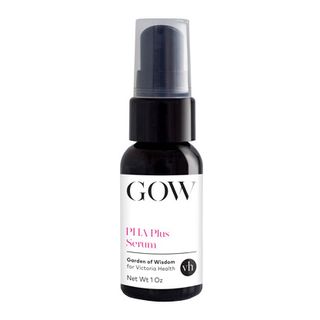The Most Basic Guide to Using Acids in Your Skincare Routine

Between AHAs and BHAs, glycolics and lactics, and the newly trending polyglutamic acid, it can be hard to know where to start when you're thinking about introducing an acid into your skincare routine. It often feels like for every bit of advice issued, there's another statement completely contradicting it. And let's face it: A few years ago, you'd be hard-pressed to find even one acid in the bathroom cabinets of most people.
Acids, however, are here to stay, so if you have yet to discover their amazing skincare benefits, it might be time you hopped on board. To help demystify these complex-sounding ingredients, I caught up with expert dermatologists to find out how to decide which acids are right for you, where exactly they should fit within your skincare routine and how often we should be using them. Keep scrolling for the most basic guide to using acids in your skincare routine…

Choosing an Acid for Your Skin Type
A quick Google search and you'll likely be left feeling pretty overwhelmed by the sheer number of acids available—especially when it comes to choosing the right one for you. "First, decide what skincare issue you're addressing," suggests David Colbert, founder and head physician of New York Dermatology Group. Rather than think about your traditional skin type (sensitive, combination or dry, for example), think about what you want to target. "For example, for fine lines and pigmentation, choose a glycolic acid. For acne, choose a salicylic acid. Each acid type has a specific target," says Colbert.

There are tons of acids on the skincare market right now, but as a quick guide to finding the right one for you, I asked Debbie Thomas, advanced skin and laser specialist of D. Thomas Clinic for a fuss-free guide. These are the four main types of acids that you need to know about.
Alpha Hydroxy Acids (AHAs)
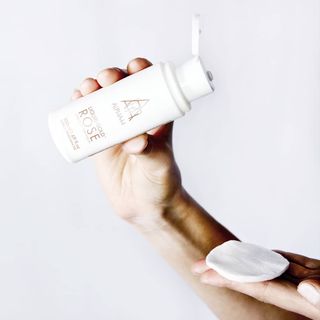
More commonly known as AHAs, alpha hydroxy acids are water-soluble acids that work on the surface of the skin. They are most renowned for their ability to exfoliate the skin for a smoother texture and brighter finish. "I would normally recommend for normal to dry, sun-damaged skin, as they can boost natural moisturising factors," advises Thomas. In terms of specific skin issues, AHAs are also great at "reducing some of the visible signs of [skin] damage like pigmentation." Glycolic acid is the AHA that will spring to mind for most people, but mandelic acid and lactic acid are also popular choices.
Glycolic Acid
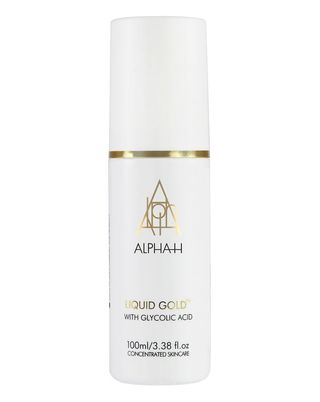
"Glycolic acid [is made] from sugar cane, which has [the] smallest molecule, meaning it penetrates skin the most," says Thompson. "This can potentially mean better results but also more chance of irritation." Apply this one with a damp cotton pad once a week for two to three weeks while your skin gets used to it. Then build up to three applications each week.
Related: I Recommend This Product to All My Friends Who Are Scared of Retinol
Lactic Acid
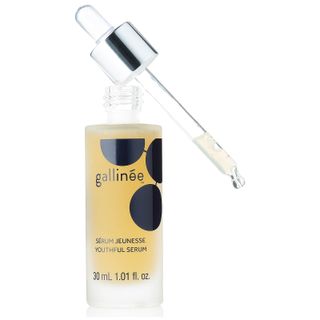
"Lactic acid (from milk) is a medium-sized molecule, so [it has a] lower risk of irritation," says Thompson. "It also has a good humectant [moisture-retaining] effect, so [it is] good for dry skin." Look for formulas that contain acids rather than trying them in their pure form if you're completely new to chemical exfoliation. This gentle serum contains slow-release lactic acid to soften and hydrate.
Mandelic Acid

"Mandelic acid is from almonds. It has a large molecule so is the least irritating but slower to see results," explains Thompson. "However, it is also antibacterial and antimicrobial—making it perfect for acne and rosacea." This acid from The Ordinary is a mild formula that gently sloughs away the top layers of the skin with no irritation.
Beta Hydroxy Acids (BHAs)
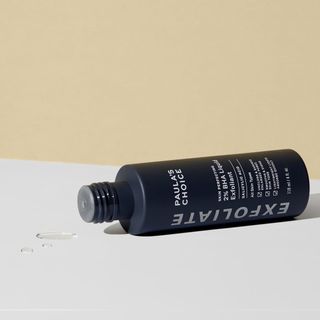
Beta-hydroxy acids are better known as BHAs. They "not only work on the skin's surface but also penetrate inside the pores because they are oil soluble," explains Thomas. "I recommend it most often for oily, acne-prone skin and enlarged pores." Unlike AHAs, there's only one type of beta-hydroxy acid, and that's salicylic acid. If you're prone to breakouts and blemishes and aren't already using this in your routine, then I'd recommend giving it a try, thanks to its ability to unclog pores and diminish excess oil. "Salicylic acid also has skin-calming properties, so it's perfect for skin prone to inflammation like rosacea," says Thomas.
Salicylic Acid

This is one of the first acids I ever incorporated into my skincare routine, and I haven't looked back since. It's now a staple part of my daily skin ritual. Although my breakouts are hormonal, I've noticed that my skin looks so much more even and blemishes calm more quickly thanks to this.
Polyhydroxy Acids (PHAs)

Potentially the least common acid of the bunch, polyhydroxy acids is the friend of sensitive skin types or anyone looking for help with hydration and skin repair. "PHAs are a derivative of AHAs [but] they focus more on the humectant part of the molecule," Thomas tells us. "[This means] they can retain moisture, actually helping [to] hydrate the skin while giving a more gentle exfoliation. They also strengthen the skin's barrier function, so I often recommend for rosacea- and eczema-prone skin types, which so desperately need that skin-strengthening factor."
Polyhydroxy Acid
Moisturising Acids

Finally, the most beginner-friendly of the acids bunch: moisturising acids. Great for all skin types, they help to lock in hydration or create a moisture barrier on the surface of the skin, depending on the size of the molecule.
Hyaluronic acid is one of the most popular acids on the market, and you'll probably find it on the ingredients list of some of your favourite skincare products already. The unique thing about hyaluronic acid is its ability to hold up to 1000 times its weight in water, making it deeply moisturising.
However, there's a new hydration acid on the block: polyglutamic acid. "PG acid is at least four times more hydrating than hyaluronic acid," Thomas tells us. "However, due to its bigger molecules, it doesn't penetrate as deeply, instead, creating more of a barrier film on the skin. My suggestion is hyaluronic acid first, and then polyglutamic acid so you're treating all layers of the skin."
Hyaluronic Acid

A skin-quenching, gel-cream texture that locks in moisture with a huge dose of hyaluronic acid along with elasticity-boosting marine algae and skin-plumping amino acids.
Related: I've Tried Hundreds of SPF Products—17 I'd Actually Recommend
Polyglutamic Acid
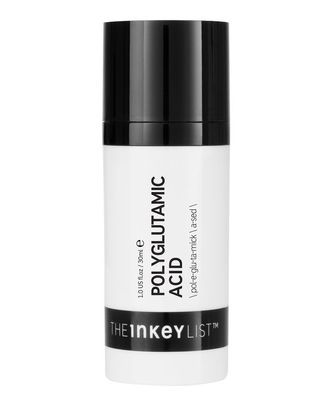
Coined as a "hydration powerhouse" by the brand, this acid prevents your skin from losing valuable hydration to leave it looking plump, juicy and bright.
How Often to Use Them

So, you've (hopefully) now decided on the acid that's best for you. But how often should you be using them? "Most acids are weak so using them daily is fine, however, once a day is enough," advises Colbert.
"You [might] need to adjust how often you use it, depending on how your skin reacts," says Thomas. "If you get mild irritation, drop to every third day [and] after a few weeks use more regularly. Or, if it says to leave it on for five minutes, you can just leave it on for two or three minutes to start."
The Application

If you're using a "neat" acid—that is, something like a glycolic toner rather a moisturiser that contains acid as one of the key ingredients—then it's best to apply it directly after cleansing (before your serums and moisturisers).
I tend to pour a small amount onto a cotton pad and then sweep over my clean, dry skin—being careful to avoid my eye area. If you're using AHAs, BHAs or PHAs, make sure to always apply an SPF. Because these acids have exfoliating benefits, your skin can be left more susceptible to sun damage.
Layering Your Acids

If you're looking to target multiple skin concerns (for instance, dullness and blemishes), then it is possible to layer up your acids for a customised skincare experience. "Most acids can be used together and are synergistic. So, yes, it's okay to mix acids if you're trying to address multiple skin issues at once," says Colbert.
Thomas concurs: "Yes, it is possible to mix acids. … But first you need to use an individual product for a little bit of time to make sure your skin is happy with it, then you can slowly add your next active product and so on." Tread carefully, though. Overusing acids can lead to sensitised skin, so keep an eye on rashes or irritation, and stop using your acids for a while if needed. "The only acid to use in this situation is hyaluronic acid because it's super hydrating," says Colbert.
With no signs of the popularity of acids slowing down, there's been no better time to experiment with new formulas to supercharge your skincare routine. "We need good, regular exfoliation, and used acids tend to be the best option for this," says Thomas. "Once something becomes normal, we tend not to get excited about it, but, for sure, acids are here to stay."
Next up, this Scandi fashion girl just shared her seven-step skincare routine.
